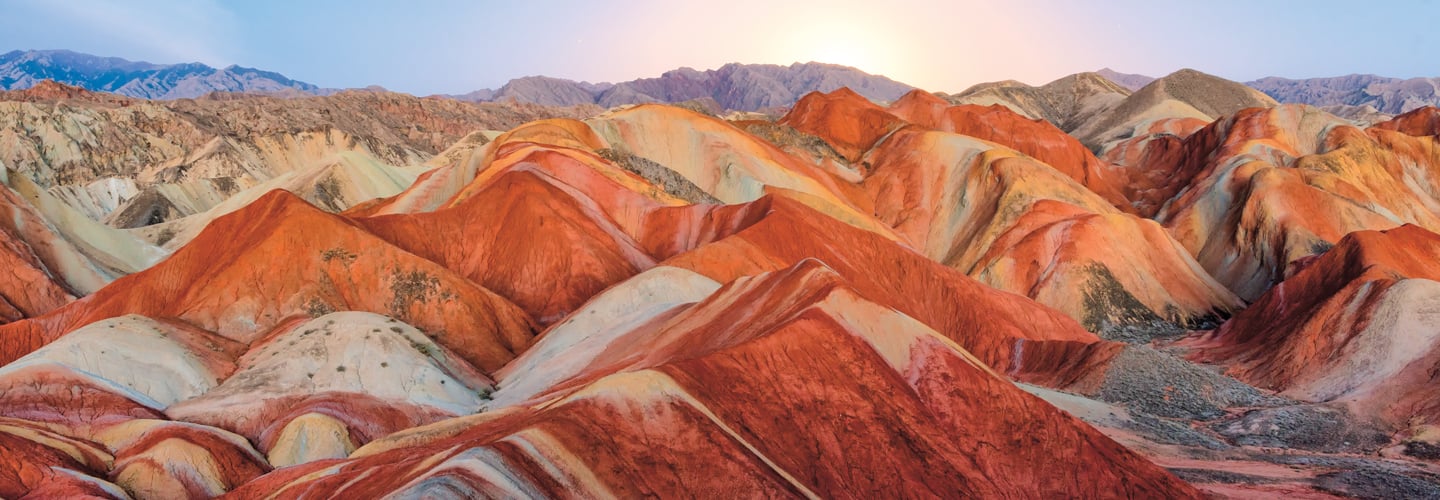DELICATE ARCH
The hole in this formation used to be filled with rock before being broken down by strong winds.

Amazing Rocks!
How some of the planet’s coolest landforms were formed
Amazing Arches
Arches National Park • Utah
Arches National Park in Utah is home to more than 2,000 natural rock arches. The Delicate Arch (pictured) is the region’s most famous landform. It reaches more than 60 feet into the sky. The arches were formed by erosion. Strong winds slowly broke down the rock to create bridge-like formations. Although the arches may look like bridges, it’s not a good idea to try to walk across one—these formations are fragile.
Arches National Park has the largest number of these arches in the world, but they are also found elsewhere. Rocky coastal areas exposed to constant wind are the most common places to find these incredible landforms.
UNDERWATER CAVE
Rising seas filled this cave with ocean water.
Great Blue Hole
Belize • Central America
One of Earth’s most spectacular landforms can be found off the coast of Belize in Central America. The Great Blue Hole is a round, submerged cave. But it wasn’t always underwater.
The cave itself formed about 153,000 years ago (see the How Caves Form diagram on page 4 in the magazine view). Rainfall seeped through soil to eat away at underground bedrock. This dissolved the rock, creating a cave.
In the thousands of years since, the sea level rose hundreds of feet. The cave was eventually submerged. The tremendous weight of the seawater above caused the roof of the cave to collapse. This formed the large circular opening that is seen today.
ROCK LAYERS
Different elements are responsible for the colorful stripes of these mountains.
Rainbow Mountains
Zhangye Danxia Park • China
The Zhangye Danxia (jahng-yeh dan-she-ah) National Geological Park in central China is home to mountains that seem to be painted like a rainbow.
These layers of colorful rock formed naturally over millions of years, through a process called deposition. Different sediments like sand, silt, and soil built up over time in a bowl-like basin. This created different layers, like a cake. Over millions of years, volcanic activity helped to form the region’s mountains.
Each layer gets its color from different elements found in large amounts within the rock. The reddish layers are rich in the element iron, the yellow layers have high levels of sulfur, and the blue-green stripes are a result of chlorine.
